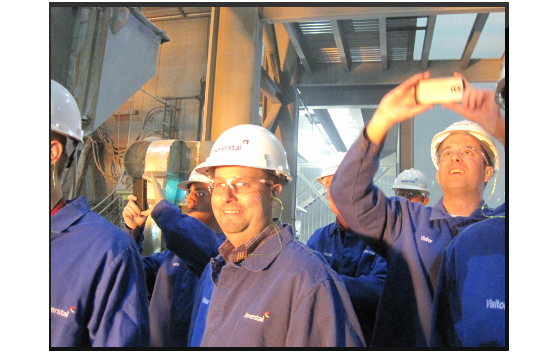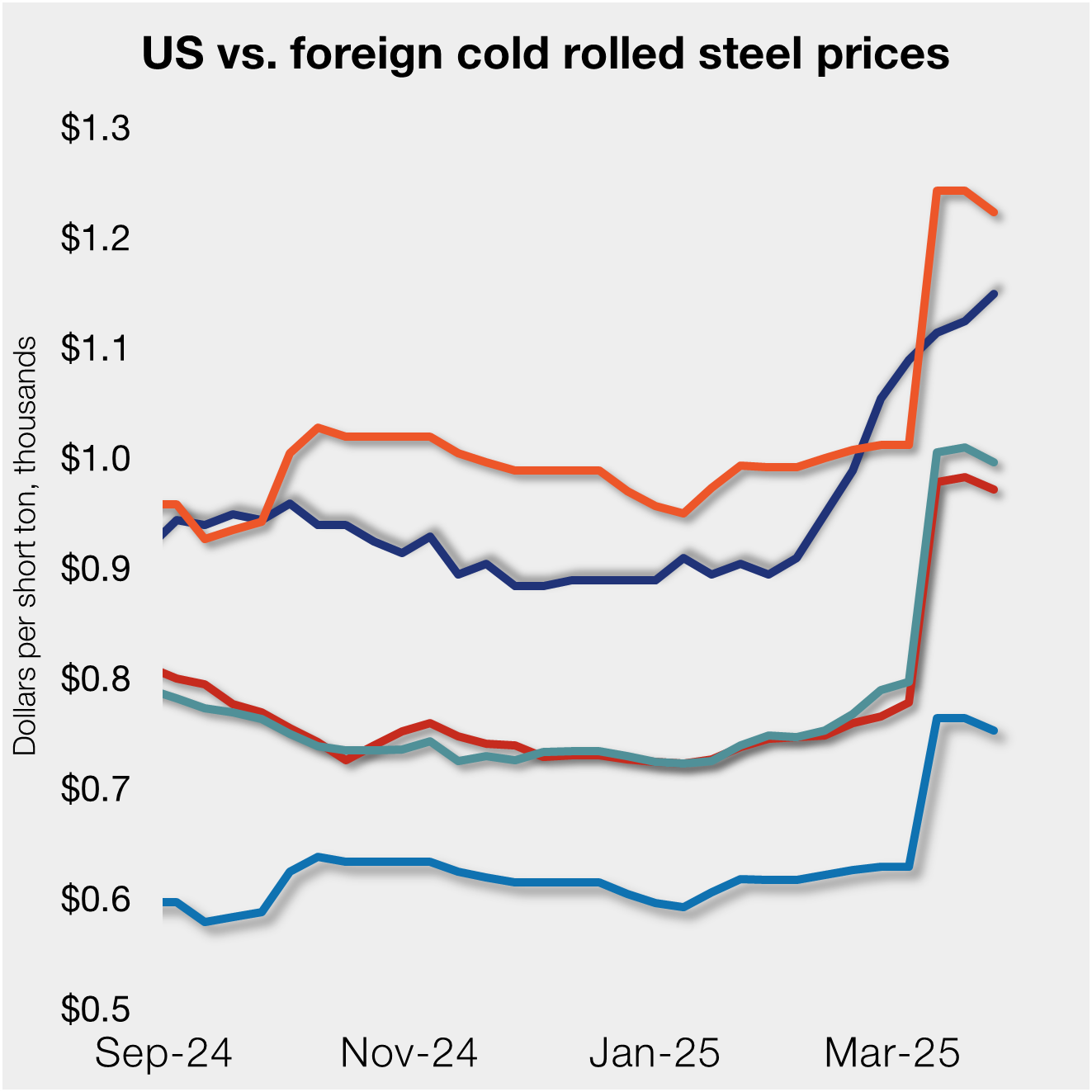Steel Products
SMU Steel Newbie: Fire and Brimstone—The Mill Tour
Written by Sandy Williams
March 6, 2013
Written by: Sandy Williams
Billowing flames, sparks careening upward like thousands of fireflies, the brilliant blue-white glow of the arc, and heat—intense heat. It is hard to adequately describe the power emanating from the electric arc furnace as one stares at it enthralled. Our Steel 101 class felt that power up close and it was an experience to remember.
The tour of the Severstal Columbus mini-mill was definitely the highlight of the workshop. As our bus approached the facility we saw hundreds of steel coils cooling outside in the yard. After meeting our guides and dressing in blue jackets, helmets, safety glasses and earplugs, we broke into two groups to begin our foray into the mill.
 The interior of the mill was huge! We walked for nearly three hours, climbing stairs to multiple levels, following the steel from its great melt in the furnace through its journey by huge ladles to the tundish where molten steel was poured into a mold and cooled while moving, then in a continuous process by conveyor to roughing stands, finishing stands and its final ejection as hot coiled rolls onto robotic carts to be whisked away. Then we followed the cold rolled line as it moved its way to the hot dipped coating operation. This ribbon of steel seemed to extend endlessly through the mill until we caught our last sight of it coming out of a zinc bath, rising toward the ceiling.
The interior of the mill was huge! We walked for nearly three hours, climbing stairs to multiple levels, following the steel from its great melt in the furnace through its journey by huge ladles to the tundish where molten steel was poured into a mold and cooled while moving, then in a continuous process by conveyor to roughing stands, finishing stands and its final ejection as hot coiled rolls onto robotic carts to be whisked away. Then we followed the cold rolled line as it moved its way to the hot dipped coating operation. This ribbon of steel seemed to extend endlessly through the mill until we caught our last sight of it coming out of a zinc bath, rising toward the ceiling.
Each of the mill operations are run by banks of computers located in rooms high above the main floor operated by one or two technicians who may follow an entire line through its processing. Steel making is a highly automated process so we saw very few workers on the floor itself. Robotic cranes and overhead conveyances moved objects, while sirens blared out warnings (the earplugs were a necessity not an accessory). To me it looked gloriously sci-fi.
This was so different from how I envisioned my father’s time as a steelworker in 1950 through 1980. As a child, I thought my dad worked in a subdivision of Hell in downtown Cleveland. It was very dirty–dirty skies, dirty windows, dirty cars in the parking lots and, of course, those ever burning smoke stacks and fires.
Severstal Columbus is nothing like that. The air is clean, the facilities are clean, and efficiency and safety are the norm. Our guides on the tour were terrific–knowledgeable and patient when answering our questions.
As day one drew to a close, we rode back to the hotel exhausted but excited by what we had seen. I was now able to take what we had learned earlier in the day in the classroom and put together a few more pieces of the puzzle of steelmaking.

Next time: Day Two—Marketing Fundamentals

Sandy Williams
Read more from Sandy WilliamsLatest in Steel Products

Nucor keeps HRC price unchanged
Nucor paused its weekly hot-rolled (HR) coil price this week, keeping it flat for the first time since Jan. 21. This comes after a nine-week rally that saw the company increase prices by double-digits for eight of those weeks.

Nucor increases plate prices by $40/ton
Nucor aims to increase prices for steel plate by $40 per short ton (st) with the opening of its May order book. The Charlotte, N.C.-based steelmaker said the increase was effective with new orders received on Friday, March 28, in a letter to customers dated the same day. The company said the price hike applied […]

US CRC price gains ground over imports
US cold-rolled (CR) coil prices increased again this week, while offshore prices declined.

SMU Steel Demand Index momentum slows
Steel Market Update is pleased to share this Premium content with Executive members. Contact info@steelmarketupdate.com for information on how to upgrade to a Premium-level subscription. Growth in SMU’s Steel Demand Index eased in March after reaching a four-year high in late February. Despite a moderate gain, the index remains in expansion territory. The Steel Demand […]

Leibowitz: Impact of tariffs on US manufacturers
On February 10, President Trump announced a massive restructuring of tariffs on steel and aluminum. Those changes took effect on March 12, and they will impact US manufacturing. What will the impact be? Bye-bye exclusions Perhaps the most important change, which hits imports from all countries, is the loss of a product exclusion process to […]
